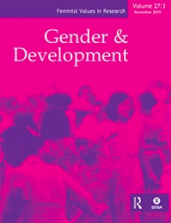Gendered identities and digital inequalities: an exploration of the lived realities of the transgender community in the Indian digital welfare state

Overview
With rapid digitalisation and technological advancements, the emergence of digital welfare states worldwide has become a reality. Broadly, the term digital welfare state refers to the adoption of information and communication technologies (ICTs) and digital tools to transform public and welfare services, such as biometric identification systems and automated systems to verify the eligibility of citizens for welfare benefits. This increased use of technological innovations and digital tools in governance is presented as a citizen-centric move that would improve accessibility and availability, and increase efficiency. However, one of the major critiques of the digitalisation of welfare systems is that it excludes people from disadvantaged sections who lack access to digital infrastructure and digital literacy from actively participating in society. In the context of the emerging Indian digital welfare state, this paper focuses on a particular marginalised community, that is, the transgender community in India, to understand their lived experiences of interacting with public digital systems. Historically, the transgender community in India has been socioeconomically marginalised, making them important beneficiaries of public welfare services. The Indian government recently introduced a gender identification digital system for the transgender community, which would be used to procure official gender identity cards and dispense social benefits and subsidies to them. This paper analyses the inequalities and exclusions faced by the transgender community in India in participating in the digital welfare system and highlights its potential human rights and policy implications.
Keywords
Additional details
Author(s)
Publisher(s)
Editor(s)
DOI
10.1080/13552074.2022.2131250How to cite this resource
Citation styles vary so we recommend you check what is appropriate for your context. You may choose to cite Oxfam resources as follows:
Author(s)/Editor(s). (Year of publication). Title and sub-title. Place of publication: name of publisher. DOI (where available). URL
Our FAQs page has some examples of this approach.



